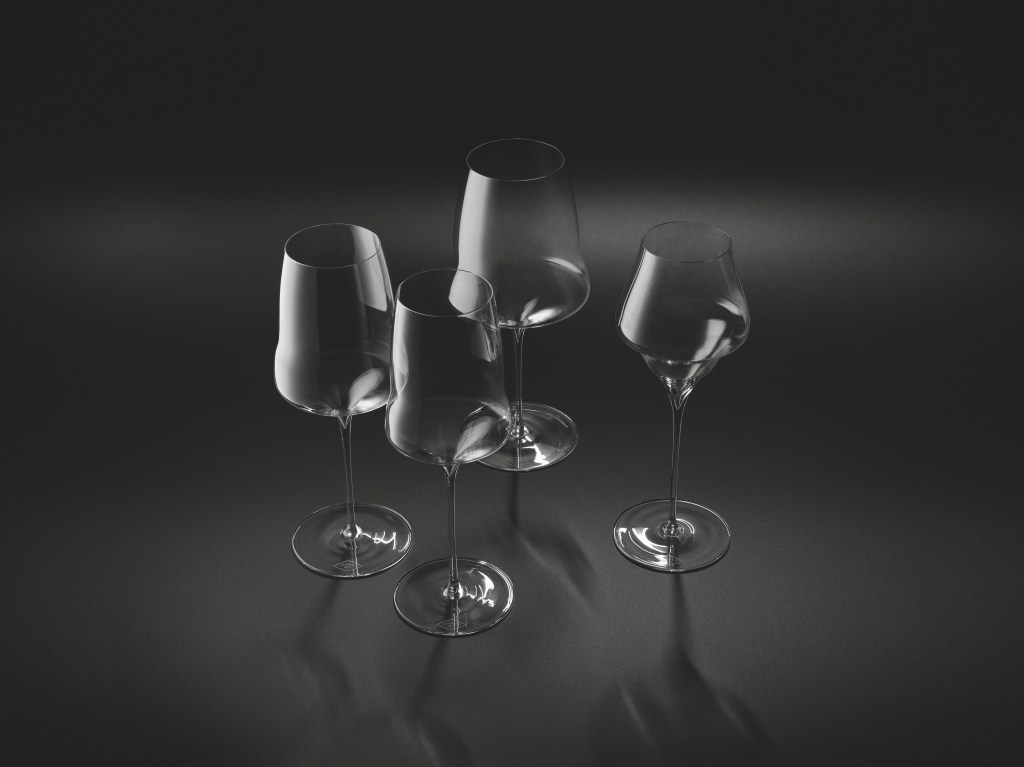The only thing that’s standing between you and a great wine isn’t the price of the bottle — it’s the glassware.
“It’s important to recognize that the shape of the glass significantly impacts the aroma and flavor of the wine,” says Kurt Josef Zalto, creative director of glassmaker Josephinenhütte but most of all, a sixth-generation practitioner of his family craft.
And it’s not just artisans in the field who say the vessel affects the beverage — it’s science.
In 2015, scientists at the Tokyo Medical and Dental University captured the effect of different shapes and temperatures on wines, concluding that these parameters could change the resulting perception significantly.
In a nutshell, the larger the bowl, the more aroma will be released, while rim taper will guide the scent to the nose. The right combination will bring out the most flavor and aroma, which accounts for some 80 percent of the experience, according to experts.
In short, the wrong shape could turn that treasured vintage into pedestrian plonk.
What makes a good glass?
Various elements play a part: “A thin rim for smooth delivery to the palate, a well-balanced form that accentuates the true character of the beverage, while remaining aesthetically pleasing to the eye,” Zalto explains. The purity and clarity of glass or crystal will also influence the taste.
Oh, and be conservative when serving. “The less wine that is poured, the better the glass is able to demonstrate its qualities,” says the Austrian-born and -based designer, who recommends stopping at the kink, or the place where the glass starts to narrow upward.
Each grape variety might be different but that’s not to say you need as many glasses as you have references in your cellar.
Enter the Josephine collection, designed by Zalto and entirely hand-blown, where the designer has put in the legwork — or rather, the glasswork — to create designs that are as versatile as they are efficient.
The glass artist’s family traces its roots back to the Veneto region in Northern Italy, where a thriving and reputed glassmaking tradition persists to this day. After the 18th century, his ancestors migrated to Austria, taking their know-how with them.

At age four, the future glass designer was already captivated by the intricate process that turned sand, soda ash and limestone into a molten ball shaped in wooden molds by unwavering hands and precise gestures in his father’s atelier.
“The sheer craftsmanship always held a special allure for me,” he tells WWD Weekend. By 11, he’d already sketched his first designs and in his 20s, his first designs under the family name were coming out.
Although his path with the business bearing his family name stopped in 2009, Zalto never stopped searching for the ideal shape. In 2019, what he considers his best work so far: Josephinenhütte by Kurt Josef Zalto.
Nodding to an eponymous glass manufacture founded in 1852, the glass manufacturer was cofounded by Zalto, Matthias Düwel and Marcus Meyer, two entrepreneurs and longtime friends of the designer.
Beyond the oenological, the company aims to transform its base in Brand-Nagelberg, Austria, into a center for high-quality industrial glass production, one that is hopefully completely climate-neutral in the near future.
Four shapes for wines and Champagne, including the No. 2 “universal” all-rounder, a water glass for water, two sizes of decanters and a polishing kit comprise the Josephine collection.
Two more designs were introduced in November, including the No. 6 tall water glass and the Josephine carafe. Incorporating the golden ratio, it is meant to enhance water as well as wine but also fit in a standard refrigerator door.
Glasses in the range are all priced at $90 per piece, and prices go up to $290 for the decanter that can hold a magnum’s worth of wine. A fine dining set for six will set you back $2,100.
Five years in the making, Zalto’s Josephine collection was “a blend of intuition and testing,” involving extensive research into the way liquids behave in different shapes.
Although mathematics is as useful as wine knowledge in the development process, he says it’s “unshakeable passion for the art of glassmaking, a strong dedication to creating glassware that heightens the pleasure of enjoying wine” that led him to these award-winning designs.
Nature is central to his work. “The organic shapes and structures found in the natural world have consistently showcased both form and function,” he says, naming this dichotomy as a major creative motivation.
The result is a glass that feels smooth in the hand, so thin the wine is nearly sitting in your hand, with a kink that makes the wine develop faster and more intensely to deliver all its aromas.

It’s not just Zalto who considers his Josephine collection the pinnacle of his work. Wine experts and enthusiasts consider them the ne plus ultra of wine glasses.
“Even water tastes better in them” for Cesar Ramirez, owner of three-Michelin-star Chef’s Table at Brooklyn Fare, one of a number of top tables that have started using Josephine glasses to present their beverages.
Another is Momofuku Ko in New York City, where New York’s Best Sommelier 2022 Nikita Malhotra officiates. Zalto’s designs “have changed the overall wine drinking experience,” says Malhotra, describing the glasses as having an effortless feel that turned them into “extensions of one’s hand.”
The Josephine No. 2 has even received design accolades that include a Red Dot award in 2022, and recognition from the expert panel at Vinum, a reputed wine guide and media who gave it 18 out of 20 and called it the best universal wine glass.
“Whether it’s enjoying fine wine with friends, experiencing different cultures through wine and cuisine or simply savoring a moment of tranquility with a glass of wine, these experiences reaffirm the importance of crafting exceptional glassware,” Zalto says.


